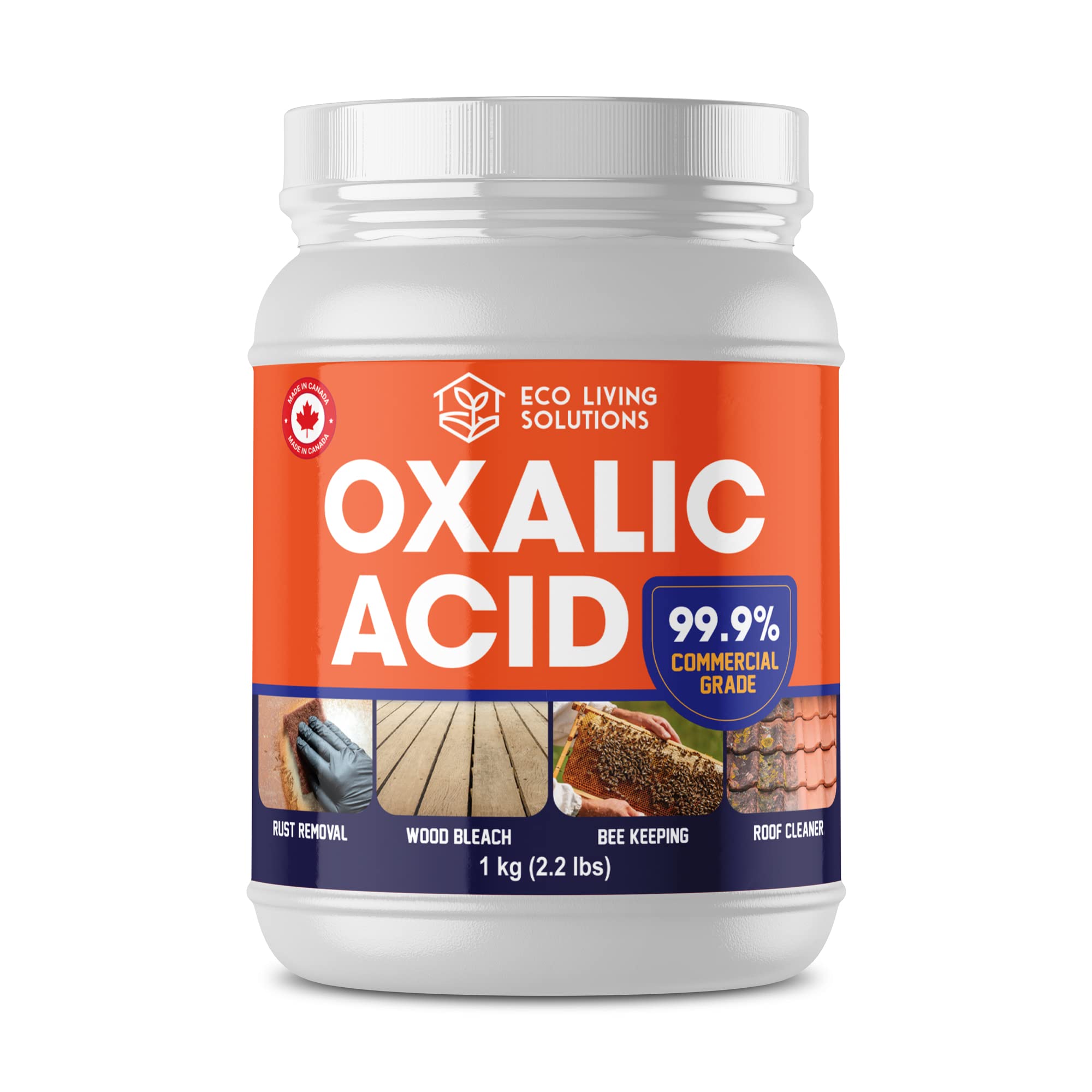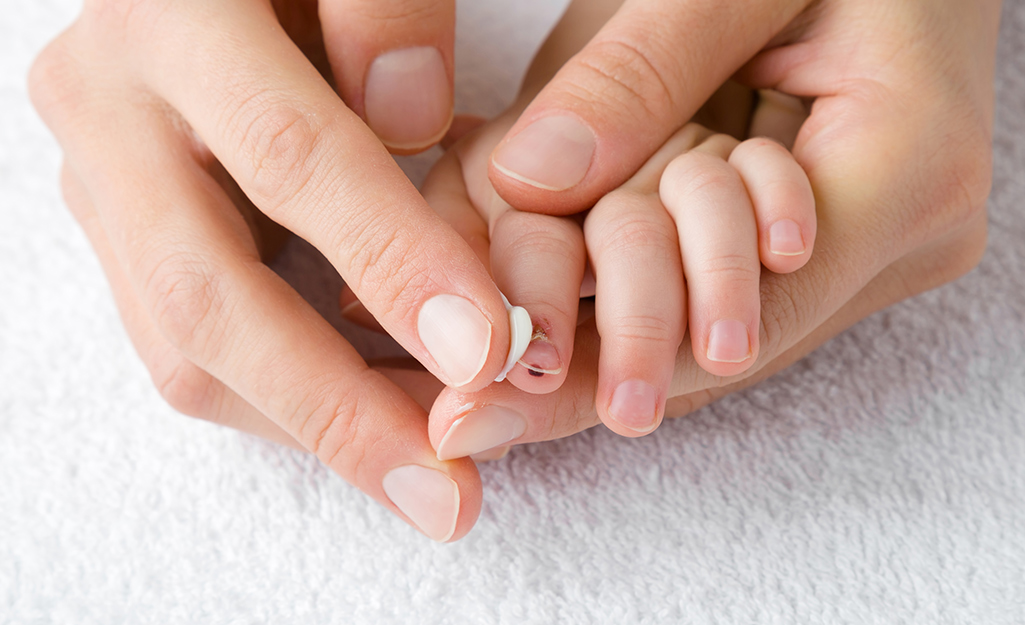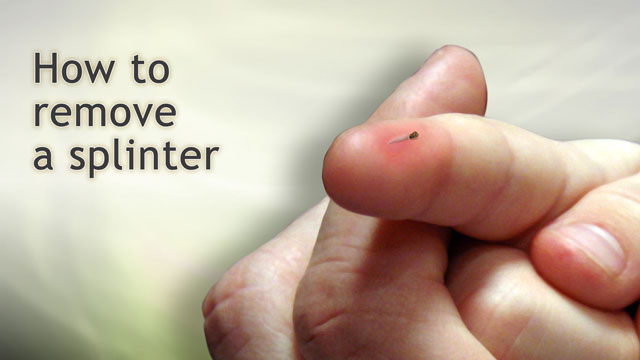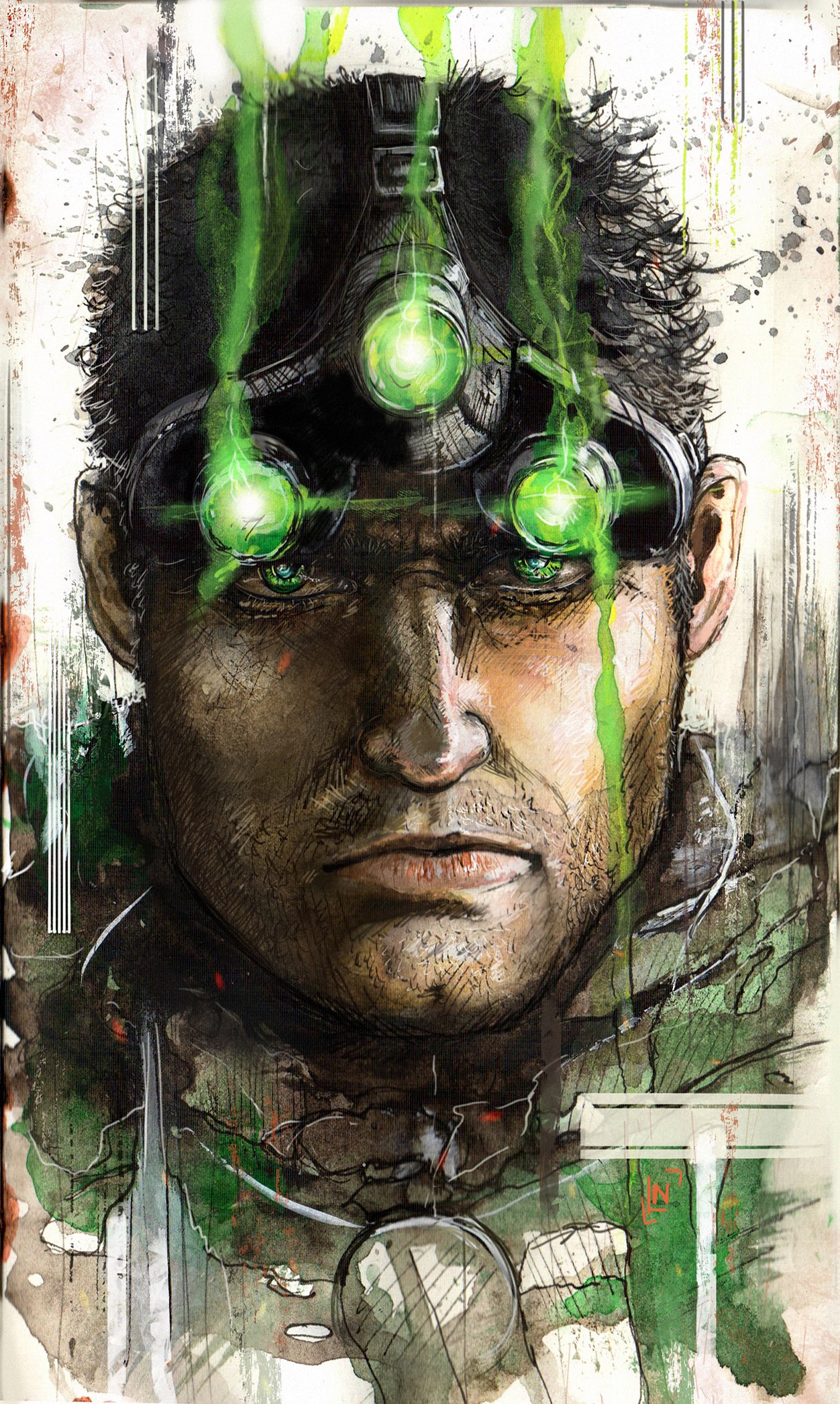Will a Splinter Dissolve? Expert Tips for Dissolving and Removing Wood Splinters
How to safely and effectively remove wood splinters. Expert advice on dissolving splinters, treating deeper splinters, and keeping kids calm during the process.
Splinter Removal Made Easy: Expert Tips for Success
Splinter removal can be a stressful experience, especially for kids. However, with the right approach and expert guidance, it doesn’t have to be a painful ordeal. Pediatricians offer valuable insights on the best methods for splinter removal, whether the splinter is easily visible or deeply embedded under the skin.
Removing Visible Splinters: A Step-by-Step Guide
According to Dr. Sara Siddiqui, a pediatrician at NYU Langone Huntington Medical Group, the first step in splinter removal is to clean the area with soap and warm water. Then, use a clean pair of tweezers to gently pull the splinter out, starting at the tip and following the angle at which it’s embedded. The key is to remove the splinter intact, avoiding any breakage.

Tackling Deeper Splinters: Careful Techniques to Expose the Edge
For deeper splinters that are fully beneath the skin’s surface, the approach is a bit more involved. Dr. Christina Johns, a pediatric emergency care physician, recommends gently scraping the top layer of skin with a clean sewing needle. This can help expose the edge of the splinter, allowing you to grasp it with tweezers and remove it. The American Academy of Dermatology also suggests using a sterilized needle to pierce the skin at one end of the splinter and carefully push it out.
Minimizing Pain and Discomfort During Splinter Removal
Splinter removal can be uncomfortable, but there are a few techniques to make the process more tolerable. Squeezing the skin underneath the splinter during removal, icing the area beforehand, and avoiding multiple attempts can all help reduce discomfort. After removal, regular cleaning, warm water soaks, and the application of Vaseline and a gentle antibiotic ointment can aid in the healing process.

Keeping Kids Calm: Strategies for a Stress-Free Splinter Removal
One of the biggest challenges in splinter removal is keeping kids calm and cooperative. Pediatricians recommend speaking softly, using gentle movements, and employing distractions such as videos, games, or even lollipops (for older children). Maintaining a calm and confident demeanor as the caregiver can also go a long way in soothing a child’s fears during the procedure.
When to Seek Professional Help for Splinter Removal
If a splinter is deeply embedded or the removal process is not straightforward, it’s best to consult a medical professional rather than attempting it at home. Dr. Tara Kotagal, a pediatrician, advises that in such cases, the safest option is to seek guidance from a doctor or nurse, as they have the necessary tools and expertise to ensure a safe and effective splinter removal.
Preventing Splinters: Tips for a Safer Environment
While splinters are a common occurrence, especially for active children, there are steps you can take to minimize the risk. Ensure that playgrounds, outdoor furniture, and other surfaces are well-maintained and free of exposed wood or sharp edges. Encourage children to wear appropriate footwear and gloves when engaging in activities that may expose them to potential splinters.

The Importance of Proper Hygiene and Aftercare
Proper hygiene and aftercare are crucial in the management of splinters. Always wash your hands and the affected area with soap and warm water before and after splinter removal. Keep the area clean and covered with a bandage to prevent infection. Monitor for signs of worsening inflammation or infection, and seek medical attention if necessary.
Debunking Myths: Will a Splinter Dissolve on Its Own?
A common myth is that a splinter will eventually dissolve on its own. However, this is not the case. Splinters, particularly those made of wood, do not dissolve and must be removed to prevent further complications such as infection or deeper tissue damage. Attempting to wait it out or hoping for a splinter to disappear is not a recommended course of action.
The Key Takeaways: Expert Advice for Safe and Effective Splinter Removal
In summary, the key points for successful splinter removal include:
– Cleaning the affected area with soap and warm water
– Using clean tweezers to gently pull the splinter out, following the angle of entry
– Carefully scraping the skin’s surface to expose deeply embedded splinters
– Minimizing pain and discomfort through techniques like icing and warm water soaks
– Keeping children calm and cooperative during the process
– Seeking professional medical help for complex or deeply embedded splinters
– Maintaining proper hygiene and aftercare to prevent infection

By following these expert-backed tips and techniques, you can efficiently and safely remove wood splinters, providing relief and preventing further complications. Prioritizing proper splinter management is crucial for a speedy recovery and a stress-free experience for both you and your child.
Splinter removal for kids: How to remove them quickly and painlessly
It’s all fun and games until somebody gets a splinter. Similar to skinned knees or scraped palms, splinters are very much a part of childhood. Unlike the former, though, which are often accompanied by tears that quickly subside with a kiss and a character Band-Aid, splinters and their treatment — the actual splinter removal — have the ability to bring out a hysteria unlike no other.
Despite what most tweezer-fearing kids think, in many cases, splinter removal can be pretty quick and relatively painless (both physically and emotionally). “If the splinter is poking out of the skin, removing it is fairly straightforward,” says Dr. Tara Kotagal, a pediatrician at Lurie Children’s Primary Care: Town & Country Pediatrics in Skokie, Illinois. However, as every parent and caregiver knows, not every splinter situation is the fast and easy kind.
Whether you’re wondering how to remove a deep splinter or want advice for taking care of one that’s peeking out of the skin’s surface, these expert tips for splinter removal will make the entire ordeal more comfortable for everyone.
How to remove a splinter at home
According to Dr. Sara Siddiqui, a pediatrician at NYU Langone Huntington Medical Group, when it comes to splinter removal, step number one should always be cleaning the area with soap and warm water (not so painful!). After that, assess the situation.
“If the splinter is easily visualized, use a [clean!] tweezer and remove starting at the tip,” she explains. “Pull with gentle pressure so as not to break the splinter and remove it intact.” Kotagal adds that the splinter “should be pulled out at the same angle in which it’s embedded” to avoid breakage.
Quick splinter removal tips
- Wash hands with soap.
- If possible, clean the area surrounding the splinter or soak skin in warm, soapy water.
- Using sterile tweezers, gently pull the splinter from the top, away from where it has entered under the skin. Go slowly, as the goal is to remove the splinter all in one piece.
Removal tips for deeper splinters
For deeper splinters, removal is a little less cut and dried. “If the splinter is fully beneath the surface of the skin, clean the surface overlying it with soap and water and then scrape the very top surface of the skin with the side [the side!] of a clean sewing needle,” says Dr. Christina Johns, a pediatric emergency care physician and senior medical advisor at PM Pediatric Care. “This should rough the skin up a bit, which hopefully will expose the edge of the splinter, and then it can be grasped with tweezers for removal.”
“If the splinter is fully beneath the surface of the skin, clean the surface overlying it with soap and water and then scrape the very top surface of the skin with the side [the side!] of a clean sewing needle,” says Dr. Christina Johns, a pediatric emergency care physician and senior medical advisor at PM Pediatric Care. “This should rough the skin up a bit, which hopefully will expose the edge of the splinter, and then it can be grasped with tweezers for removal.”
The American Academy of Dermatology (AAD) suggests utilizing a sterilized needle “to gently pierce the surface of the skin at one end of the splinter” for deep splinters, and then using said needle to “carefully push out part of the splinter” before pulling it out with tweezers. However, Kotagal notes, “If it is not a straightforward removal, then the best thing to do is call a medical professional rather than attempting removal at home.”
“If it is not a straightforward removal, then the best thing to do is call a medical professional rather than attempting removal at home.
”
— DR. TARA KOTAGAL, PEDIATRICIAN
Tips for minimizing pain during and after splinter removal
Siddiqui notes that in many cases, “removal of the splinter ultimately helps with pain.” But here are other ways to make both splinters, and splinter removal, slightly more comfortable, according to Kotagal, Johns and Siddiqui:
- Squeeze the skin underneath the splinter (during removal).
- Ice the area prior to removal.
- Don’t make multiple attempts, which can result in digging into the skin and worsening discomfort.
For pain after splinter removal, here’s what Siddiqui and Kotagal recommend:
- Continue to regularly clean the area.
- Soak in warm water.
- Place a bit of Vaseline and a gentle antibacterial ointment over the area.
- Keep covered with a bandage.
Tips for keeping kids calm during splinter removal
More than the actual removal process, one of the biggest challenges parents and caregivers face during splinter removal is, well, the hysteria that often ensues at the sight of a pair of tweezers. In addition to it being heartbreaking, a flailing, screaming child also hampers the process (which is why more than one person is often recommended when removing a child’s splinter).
In addition to it being heartbreaking, a flailing, screaming child also hampers the process (which is why more than one person is often recommended when removing a child’s splinter).
Here are a few ways to keep kiddos calm(ish) when attempting to remove a splinter:
- Be gentle. “Parents and caregivers can help children remain calm by speaking softly and being gentle during the process,” notes Siddiqui.
- Distract. “Distraction with a video, game or even a lollipop, if age appropriate, is a great way to keep children calm during any procedure,” says Johns.
- Keep your cool. “A great way to keep kids calm during splinter removal is to remain calm and confident,” Kotagal says. “Additionally, parents or caregivers should have an assistant on hand to distract the child while they attempt to remove the splinter.”
“Distraction with a video, game or even a lollipop, if age appropriate, is a great way to keep children calm during any procedure.
”
— DR. CHRISTINA JOHNS, PEDIATRICIAN
How to tell if a splinter is still there
In a cruel twist of events, sometimes it’s hard to tell if you actually got the splinter (or the whole thing) after your removal attempt. According to Kotagal, if a splinter is close to the surface of the skin, then you should be able to make out a “small mark or dot beneath the skin.” If it is deeply inserted into the skin, there should be signs of “redness, swelling and tenderness.” To make sure that there is a splinter, push lightly on the suspected area on the foot or use a magnifying glass and/or flashlight.
When to call the doctor about a splinter
According to Siddiqui, Kotagal and Johns, parents and caregivers should call their healthcare provider for the following splinter situations:
- If removal isn’t “straightforward” (i.e. it’s not sticking out or you’re unable to remove it).
- If there is concern about a skin infection surrounding the splinter.

- When the splinter is on the face, near the eye or under the nail bed.
- If it is deeply embedded in the skin or if attempted removal at home has resulted in a broken splinter.
- If the area has become red or appears to be infected.
- If the child is still complaining of pain after removal.
- If there’s pus drainage.
- If a fever is present.
“Parents should also consult with a medical professional to ensure their child is up to date on vaccines, especially the Tetanus vaccine,” Kotagal notes. The reason being, when children aren’t vaccinated, splinters may cause infections, including Tetanus.
What happens if you don’t remove a splinter?
It depends. Sometimes, “not a thing” happens if you don’t remove a splinter, says Johns. Other times, she says, it can cause inflammation and/or an infection.
“The size and location of a splinter will determine whether removal is necessary,” says Siddiqui. “If it is causing pain and appears red or swollen, then the splinter should be removed. If it is not causing pain, then soaking in warm water can help soften the skin surrounding and the splinter could come out on its own.”
If it is not causing pain, then soaking in warm water can help soften the skin surrounding and the splinter could come out on its own.”
“The size and location of a splinter will determine whether removal is necessary. If it is causing pain and appears red or swollen, then the splinter should be removed.”
— DR. SARA SIDDIQUI, PEDIATRICIAN
Will a splinter eventually work itself out?
Again, it depends. “Sometimes, the body will work to slowly get rid of the splinter as skin layers overlying start to slough off,” explains Johns.
One way to “assist in the process,” according to Siddiqui, is to soak the area in warm water. Also, Siddiqui adds, don’t count on a splinter to work itself out if it’s “causing pain or appears infected.”
Generally, though, this happens when splinters are somewhat close to the surface, Kotagal adds. “In certain situations, splinter fragments very close to the skin’s surface may work themselves out on their own,” she says. “However, deep-seated splinters will require professional removal.”
“However, deep-seated splinters will require professional removal.”
Splinters in Your Feet
Getting splinters in the feet is fairly common. Of course, some people wonder if they can simply leave a splinter in their foot and let it work itself out. Others may not know how to safely remove a splinter, which can cause more harm than good. A podiatrist can help you remove splinters from your feet, particularly in children who may be squeamish about having parents remove them.
Why Splinters Need to be Removed
Regardless of whether the splinter is wood, glass, or even a plant thorn, you must remove it from the foot as soon as possible. Why? Because these foreign objects also contain germs, which can lead to an infection if the splinter isn’t promptly and fully removed.
How to Remove a Splinter Yourself
You probably have all the tools you need at home to remove a splinter safely. Of course, it’s important to go over the basics of safe splinter removal. Here are tips for safely removing the splinter:
Here are tips for safely removing the splinter:
- Soak the foot in warm water for a few minutes to soften the skin
- Wash your hands thoroughly before removing the splinter
- Once the skin has softened in the water, see if you can squeeze the splinter out by simply applying pressure to both sides (like you would a pimple)
- If squeezing doesn’t work, you can use tweezers or a sewing needle to remove the foreign object (just make sure to disinfect these tools first with rubbing alcohol)
- If the splinter cannot be grabbed with tweezers, use the needle to create a small opening around the splinter to make it easier to grab
- Be gentle and careful when removing the splinter to avoid breaking it
When To See a Podiatrist
While a splinter often isn’t a big deal there will be situations in which turning to a podiatric physician will be the best option. You should turn to one if:
- You aren’t able to remove the splinter or foreign object yourself
- The area becomes red, tender, swollen, or contains pus (signs of infection)
- You feel like there’s a splinter but you can’t see it
- You have diabetes or nerve damage in your feet (do not try to remove a splinter yourself)
- The splinter is too deep or too painful
- Your child is too squeamish or won’t sit still so you can remove the splinter
If there is a foreign body in your foot or your child’s foot, or if there are symptoms of an infection present, it’s important that you turn to your podiatrist right away to have the splinter removed and the area properly treated.
Category: Foot Injury
Tags:
Splinters
What happens if you do not pull the splinter out of your finger, and how to do it correctly
Championship.com
A small fragment can cause irreparable harm to health.
© Chempionat.com
Why a splinter is dangerous
Video of the day
Often a splinter only irritates the upper layers of the skin and hurts unpleasantly. In most cases, this does not cause any inconvenience, and the body itself is able to “push” it out after a few days.
But this is only if the fragment sits shallowly, under the upper layers of the skin and almost does not violate the dense epithelial protective barrier.
Nevertheless, deep splinters should not be underestimated, because, being a foreign body in the body, they can seriously infect not only the skin at the site of contact, but the entire body, which in the future can lead to a variety of adverse consequences.
Wooden splinters carry bacteria and fungi with them, since it is a natural material. The risk of infection will be much lower if pieces of glass, plastic or metal get under the skin.
What to do if you step on the glass while exercising on the street, told here.
Wood also contains natural oils. The immune system sees this as a threat and inflames the skin around the puncture site.
Transient inflammation is an integral part of the normal healing of all wounds. And a small amount of foreign bodies in the wound triggers a normal inflammatory response in an attempt to eliminate them or contain them from spreading throughout the body.
But when a large number of foreign bodies, bacteria and other irritants are found inside the wound, the protective reaction intensifies.
What happens if a splinter is not removed
Excessive or prolonged inflammation can delay wound healing or destroy underlying soft tissues and eventually even bones, causing intermittent reactions, osteolytic injury (breakdown of bone tissue), synovitis (an inflammatory disease), and arthritis.
If the foreign body is not dissolved or pushed out by the skin epithelium, it creates a fibrous capsule, increasing internal inflammation at the site of formation.
Staphylococcus aureus is a common infection associated with splinters. Usually manifested by purulent inflammation at the site of their contact and general fever or chills.
But the most dangerous infection associated with deep tissue damage can be tetanus caused by the bacterium Clostridium tetani. The danger to humans is the toxin of tetanus bacillus – tetanospasmin, which is released into tissues after the destruction of bacterial cells.
In the pathological form, it can be manifested by “tightness” of the jaw, muscle stiffness and general obstructive fibromyalgia (chronic pain syndrome), and in the future lead to the most adverse consequences.
People who have received stab wounds, lacerations, abrasions, stepped on a rusty nail or even received deep splinters are at risk of developing tetanus. This can happen both outdoors and indoors.
How to properly remove a splinter
The method of removing a splinter located under the skin layer depends on its size, location, composition of the fragment, accessibility of the location and the expected inflammatory state of adjacent tissues.
If you notice that inflammation starts at the site of a splinter, you can always contact a specialist for advice.
The first step is to clean the area with an antiseptic product.
Of course, if the process becomes more complicated and the splinter cannot be pulled out, or you are not sure that it is completely gone, you need to see a doctor. Especially if the splinter is large and deep and is accompanied by severe pain or inflammation.
Especially if the splinter is large and deep and is accompanied by severe pain or inflammation.
How to treat a wound
If the pharmacy is far away, you can use a natural antiseptic: both before and after removing the splinter.
Calendula. An excellent medicinal plant for treating open wounds, disinfecting and reducing inflammation.
Chamomile. This flower is not only antiseptic and anti-inflammatory, but also helps to soothe pain. In addition, it is very easy to find it anywhere. Even a tea bag will do.
Plantain. Plantain leaves can be very beneficial due to their anti-inflammatory properties. Also, it is one of the best options if the splinter is very large, as it also has hemostatic properties that can help stop bleeding after the foreign body is removed.
Thyme. Thyme flowers are also very beneficial for any type of open wound. This is due to its antimicrobial properties, which help to disinfect and furthermore promote healing.
A concentrated herbal tea can be made from one or more antiseptic medicinal plants. And just apply to the site of infection and puncture.
And just apply to the site of infection and puncture.
Pure lavender essential oil is also a good prophylactic to prevent infections. One drop every three hours is enough to prevent infection. Nevertheless, it must be a certified and high-quality oil.
Read more about other most effective natural antibiotics here.
Even natural aloe leaf gel can stop the infection. The best thing is to cut and attach a piece of the leaf, as many of the products sold contain other ingredients that are not natural.
But it is important to remember that self-treatment is unsafe, especially if the splinter is deep, the wound is neglected or infection has occurred. It is important to contact a specialist for help in a timely manner.
Health
Championship.com: main news
A thorn under the nail
This reference and information material is not an advertisement, does not aim to promote a product, work, service or other object on the market.
Published: July 16, 2016 at 15:04
A splinter – it would seem, what nonsense, with whom it does not happen. Cleaning the house, cooking, repairing an apartment, working in a summer cottage – with all these activities, we run the risk of driving a splinter into the body. Well, no gloves will save you from the sharp thorns of the wild rose. So a splinter is an everyday matter, and it seems that you shouldn’t worry too much about this.
Cleaning the house, cooking, repairing an apartment, working in a summer cottage – with all these activities, we run the risk of driving a splinter into the body. Well, no gloves will save you from the sharp thorns of the wild rose. So a splinter is an everyday matter, and it seems that you shouldn’t worry too much about this.
Meanwhile, a splinter can cause a lot of trouble. To begin with, the constant sensation of a foreign body under the skin is very annoying. In addition, when pressed, the splinter pricks. Well, if you don’t pull it out in time, it can give severe inflammation and an abscess. And then you can’t do without medical help. So a splinter can really ruin a life. Well, if she got under the nail, then this is even worse: it hurts more and it is more difficult to remove it. If you leave it there, the matter may end with a subungual panaritium, and then you will definitely have to contact a surgeon.
What to do with a splinter under the nail?
First, you can try to remove it, like a normal splinter, for example in a finger. The first thing to do is to wash your hands thoroughly with soap and water so that the dirt from them does not get into the wound. You can remove a splinter with a needle or tweezers. They must be wiped with alcohol, vodka or other alcohol-containing liquid. A finger with a splinter should also be disinfected. If the splinter has not entered very far and can be grabbed by the tip, then it is likely that it will be possible to pull it out. After that, it is necessary to treat the affected area with an antiseptic – iodine, a solution of potassium permanganate, brilliant green, etc.
The first thing to do is to wash your hands thoroughly with soap and water so that the dirt from them does not get into the wound. You can remove a splinter with a needle or tweezers. They must be wiped with alcohol, vodka or other alcohol-containing liquid. A finger with a splinter should also be disinfected. If the splinter has not entered very far and can be grabbed by the tip, then it is likely that it will be possible to pull it out. After that, it is necessary to treat the affected area with an antiseptic – iodine, a solution of potassium permanganate, brilliant green, etc.
If the splinter sits very deep, completely under the nail, it will not work to get rid of it in this way. The best thing is to see a doctor. If the splinter has not festered, then the doctor will remove it quite easily and treat the wound. But medical care is not always available. How to be in this case?
Here are some folk remedies for removing a splinter from under the nail .
- Lubricate the nail with a splinter properly with iodine several times. Firstly, iodine will disinfect the wound, and secondly, the splinter can come out on its own or dissolve (if, of course, it is wooden and not metal, for example).
- Make a salt bath. In a glass of hot water, dissolve 3-4 tbsp. tablespoons of salt and dip your finger into the solution. Keep 15 minutes.
- Make a hot bath with baking soda and salt. Dissolve 1 tsp in a glass of boiling water. drinking soda and table salt. Dip the sore finger in the bath for a few seconds, repeat 10-15 times. You can add alcohol infusions of medicinal herbs with an antiseptic effect – calendula, eucalyptus, St. John’s wort.
- Lubricate the nail thickly with ichthyol ointment.
- Apply tar or Vishnevsky’s ointment to the affected area and bandage it. After a few hours, the splinter will come out, and then it can be removed with tweezers. Instead of tar, you can use the resin of any tree.
- Dip your finger in a glass of alcohol or vodka and hold for 30 minutes.


 ”
” ”
”
